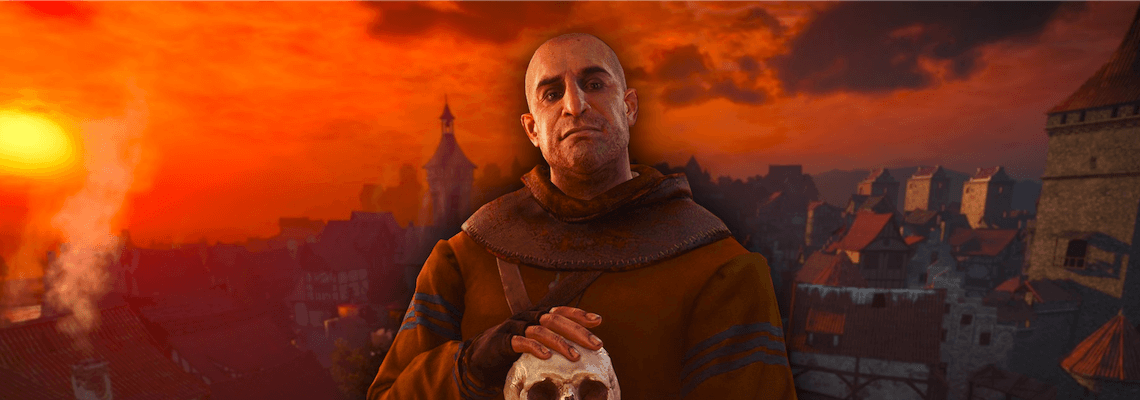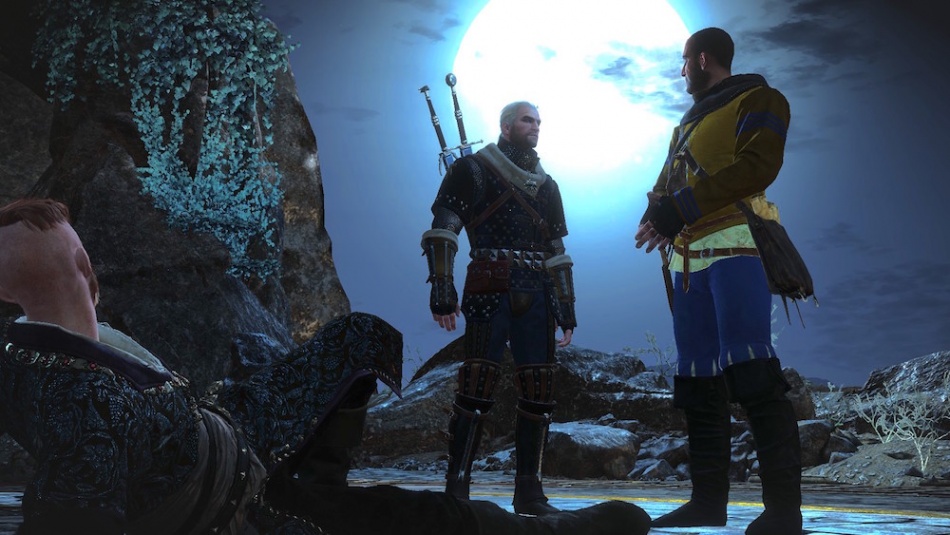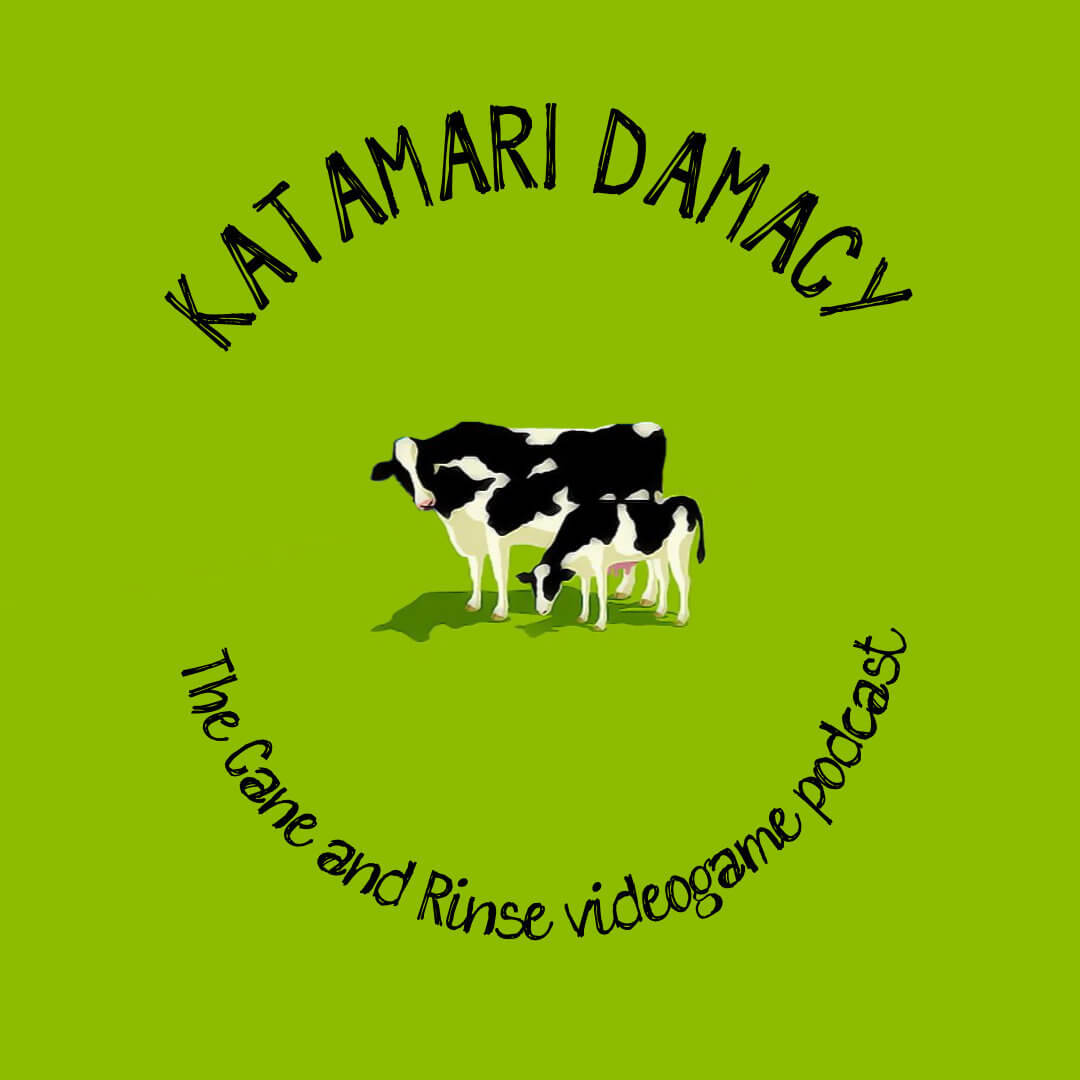“I’m no cheat. I give folk what they want, nothing more. That they oft desire unworthy things – that is entirely the fault of their rotten natures.”
*Warning! The following feature contains major spoilers for The Witcher III: Wild Hunt expansion – Hearts of Stone*
Gaunter O’Dimm is one of the most successful attempts at creating a compelling videogame antagonist I’ve seen in recent memory.
He is used more effectively and his presence is felt more acutely in Hearts of Stone, than The Wild Hunt ever are throughout the main campaign of the Witcher 3.
He deftly avoids many of the major pit falls that videogame antagonists end up repeating time and time again. So let’s examine exactly how he is used throughout Hearts of Stone, and why he’s ended up lingering in my mind.
I’ll be drawing some of what I say here from Extra Credits’ videos on videogame villains, so make sure you check those out after reading this article.
One of Hearts of Stone’s great strengths is the narrative keeps things small, intimate and character driven. It focuses on two major players, Gaunter O’Dimm and Olgierd Von Evric.
The latter being a man who owes O’Dimm a substantial debt. The story does touch the lives of other people, but really it’s about these two, and the choices you make will fall hardest on them.
O’Dimm’s primary objective in Hearts of Stone is to fulfil all the requirements of his and Olgierd’s contract, and then collect what he is owed. But Olgierd’s debit isn’t gold or land, it’s his soul.
The game never states this outright, but you are left in little doubt as to who Gaunter O’Dimm truly is and why he would covet such things. He is The Devil Himself.
Despite effectively being evil incarnate, Gaunter is portrayed with surprising restraint, both in terms of his character design and his vocal performance.
O’Dimm chooses to take the form of a trader or business man, and that’s exactly how all his dealings come off. Gaunter O’Dimm isn’t a conqueror or a dark lord, he’s a loan shark. He always delivers his end of the deal and he isn’t requesting more than was originally agreed to, it’s just that no wish is worth his asking price.
So despite feeling some sympathy for Olgierd, ultimately you can’t help but blame him for the situation he’s now in. It was his choice; he signed his name on that contract and knew the full extent of its terms. He wasn’t tricked, he was just foolish.
For me this is a far more engaging conflict, than the global catastrophe the Wild Hunt represents.
We’ve saved the world so many times in videogames, that we’ve grown numb to it.
In most games the world is never in any real danger. The story may tell you the stakes are huge, but they can be false stakes.
In Hearts of Stone, the price is more personal and intimate, and thus feels a great deal more real. And what’s even better, is your choices do impact who comes out on top in the end.
One of the many reasons Mass Effect 2 stands out as my favourite within that series, is that the plot regarding the large scale threat is relegated to the very beginning, the very end and a few brief moments in the middle. The rest of the game is a short story collection that focuses on characters and personal conflicts I actually care about.
The conclusion of the Reapers’ plan for humanity in Mass Effect 3 was never going to be as interesting to me as Garrus seeking revenge against a former friend who betrayed him or helping Thane reach out to his estranged son.
What Gaunter O’Dimm demonstrates is that to create a compelling villain or just a compelling conflict honestly, their reason for being needs to be rooted in something that affects the other characters on a personal level.
You can still have a larger scale threat, if it’s appropriate, but giving a villain impact on a micro scale as well as the macro, will make them more memorable.
“Show, don’t tell” is often regarded as ‘writing 101’, yet so many games fail to do this, and especially when it comes to villains.
Reams of text will be dedicated to explaining why the player should be scared of Mr Bogey-Wogey Pants, and his band of Naughty Gnomes. Thankfully, Hearts of Stone never tells you to be afraid of Gaunter O’Dimm.
A well-worn but effective cinematic trick is using the angle in which you choose to frame characters and the way they are blocked, to subtlety communicate who has the power in that scene.
The camera tends to look up at characters that are in a position of power, and if they’re sitting they’ll be higher than everyone else in the room. The camera looks down at characters with less power, and they’ll often be sitting looking up. And if the two characters are equally matched, the camera will be at eye level.
This is pretty basic stuff in the world of film and TV, but is only just starting to crop up in videogames as more game creators start to understand subtle approaches to storytelling.
This is just my interpretation, so take this with a pinch of salt, but I believe CD Projekt Red is using the angle of the camera to convey Geralt’s perceived feeling of power and control in the presence of Gaunter O’Dimm at different points in the story.
When Geralt and Gaunter first meet, it’s like they’re giving the audience an earlier hint of O’Dimm’s power before swapping to Geralt’s perspective.
Geralt is locked away in a cage, lying down on the ground, and when O’Dimm first enters the scene the camera stares up at him from the floor. He appears to tower over the White Wolf, and feels extremely imposing during this brief introduction. But then the camera position changes as Geralt rises to his feet. Now it’s at eye level, and Gaunter no longer feels nearly as threatening.
The more Gaunter demonstrates his abilities, the angle of the camera framing him gets lower and lower and vice versa with Geralt.
This reaches an extreme during the third act of the DLC, where O’Dimm demonstrates his mastery over time, freezing everything else around them just so he and Geralt can have a quiet chat. The White Wolf is visibly taken aback by this display of power, before composing himself and wryly dismissing Gaunter as a show off. However, for the rest of the scene we see something new in Geralt, fear.
Our badass protagonist, who can take on a platoon of armed soldiers single-handedly, is terrified of Gaunter O’Dimm.
Geralt: “You actually control time, or is this just some conjurer’s trick?”
O’Dimm: “What difference does it make?”
Geralt: “A big one.”
The camera and blocking reflect this. Gaunter O’Dimm sits comfortably atop a table, towering above everyone else in the room, and the camera is a great deal lower than him for most of this scene. Geralt on the other hand, is meekly and uncomfortably sitting on a small wooden chair, with the camera positioned quite far above him.
For the rest the game, the developers find more and more ways to position O’Dimm far above the rest of the characters, accentuating just how little control everyone else feels in this being’s presence.
The one time this is reversed, and Geralt is finally viewed by the camera as being in a position of power, is when The White Wolf finally out smarts and defeats O’Dimm.
All of this is conveyed, not through dialogue or a lore appendix buried in the menus, but through simple visual tricks and subtle character interaction. You as a player are afraid of Gaunter O’Dimm, not because of anything the game tells you about him, but due to how other characters react to him and how that is framed.
All of what I just mentioned above would have been undermined if Hearts of Stone ended with Geralt defeating O’Dimm with his sword.
All that time spent trying to convince the player that O’Dimm’s abilities far out strip anything Geralt could take on physically would have been wasted. Thankfully, CD Projekt RED handles the final confrontation with Gaunter O’Dimm very differently.
First of all, the player can choose not to confront Gaunter at all. If you truly believe Olgierd deserves everything that’s coming to him, you can let O’Dimm claim his soul and then the two of you simply part ways. But if Geralt does choose to confront him, instead of fruitlessly attempting to kill him, Geralt challenges Gaunter to a game. If Geralt is victorious, Olgierd must be released from his contract, but if he fails both Von Evric’s and Geralt’s souls belong to O’Dimm.
O’Dimm considers this proposition to be worth the risk and accepts, but on his terms. Geralt is then transported to a nightmare landscape (it is clearly Hell) and is given a riddle:
“To all things and men I appertain,
and yet by some am shunned and distained.
Fondle me and ogle me til you’re insane,
but no blow can harm me, cause me pain.
Children delight in me, elders take fright.
Fair maids rejoice and spin.
Cry and I weep, yawn and I sleep.
Smile, and I too shall grin.
What am I?”
Geralt is then given a limited amount of time to solve this, by finding the object the riddle correlates to in the Hell-scape that has been laid before him.
The player is briefly tricked into thinking the answer is “mirror”, but O’Dimm gleefully smashes every single one you encounter.
The real answer is instead “reflection,” and Geralt is able to come out victorious when he sees Gaunter’s image in a pool of water, rather than his own. If you fail to figure this out in the time allotted however, Gaunter O’Dimm appears behind Geralt and our protagonist dies pretty much instantly.
I thought this was a brilliant idea for a final gameplay set piece for a villain such as O’Dimm, because it empowers the player without dis-empowering the threat said villain represents.
It is made very clear, that Geralt stands zero chance against Gaunter O’Dimm in direct combat, as demonstrated by the immediacy of the player’s death once the time is up. But it also shows that Geralt’s skills lie beyond just combat, and while he may not be able to defeat Gaunter with his blade, he can with his mind.
The final boss has become a trope a lot of games feel they have to include, even when to many of us it doesn’t feel necessary or even appropriate.
Batman: Arkham Asylum has plenty of villains where a traditional boss fight makes sense, with the exception of the main antagonist, The Joker. The Joker could have benefited from a set-piece where the Dark Knight was forced to use his mind rather than his fists. But instead they give the Joker super powers, and we’re forced to experience a misjudged boss fight.
Uncharted 2: Among Thieves on the other hand largely avoids traditional boss battles, and instead uses large scale set pieces as punctuation. But even this game couldn’t resist the urge to include a final boss. So the antagonist Lazarevic is given super powers, and well, see above.
When implemented well, a final boss can be the highlight of a game. Surely game creators should recognise when they’ve created a villain where a traditional boss fight undermines the character and the philosophy of the game.
CD Projekt RED found a gameplay solution to the player’s final confrontation with O’Dimm that seems to fit, and even strengthen the character.
Most of the larger problems with videogame villains that the tale of Gaunter O’Dimm helps shine a light on are due to sub-par writing.
Relying too heavily on macro stakes and simply telling us over and over again how scary a villain is are both symptoms of this. But even games with superior writing often feel compelled to end the conflict between the protagonist and the antagonist with a straightforward fight, regardless of whether it makes sense or not.
Gaunter O’Dimm succeeds for me, not only because of enjoyable writing, but because CD Projekt RED knew exactly how to use him in the context of gameplay.
There are other villains, such as GLaDOS from the Portal series, that I found to be deployed as effectively as O’Dimm here, but they’re in the minority in my experience.
I hope the likes of CD Projekt RED will convince more game creators to think a bit more carefully about their own villains – and how they manifest – in future releases.



















